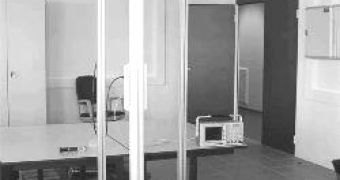Oh no... it's starting again! I mean I like all these energy converting devices that try to harness the full potential power resulted during a natural physical process, but what's enough is enough. I know the universe is all about energy and all the different ways it is converted, but all the trouble one has to go through to collect just 12 milliwatts of energy out of a water droplet is too much. Imagine trying to optimize this baby, it will probably take eons not decades!
On the other hand, there are quite a lot water droplets falling from the sky during a rain. Researchers from the CEA/Leti-Minate and the R&D institute in Grenoble, France, thought it was a good idea to create a microelectric system that collects the energy released by falling raindrops and convert it into electric energy. The device works only with water drops between 1 and 5 milimeters, and may prove one day a good alternative to generate electric energy, when the environment disables the use of the solar panels. On top of that, a single piezoelectric cell such as those used by the PVDF could prove efficient as sensors in the cooling towers serving electric power plants.
Romain Guigon and his associates recognize that there is not very much known about the processes which take place while a drop of water hits an horizontal surface, and the design is rough estimated rather than accurately calculated. It is generally believed that such impacts are mostly inelastic, thus they release almost their full energy.
Piezoelectric materials are substances that oscillate while an electrical current is being applied and vice versa, they produce an oscillating electrical current when subjected to physical pressure. Piezoelectric materials occur naturally on Earth, and quartz is probably one of the best examples. However, the R&D researchers preferred to used PVDF or polyvinylidene fluoride polymers. As the rain drop impacts the thin polymer, this starts to vibrate, producing an electrical current in the process.
While experimenting with different water droplets characteristics, such as speed, height and raindrop size, the researchers found that the biggest amount of energy is being collected when the water drop experiences low speed falls, because a high speed droplet would usually dissipate most of its energy, into a sideways motion rather than concentrating it vertically on the piezoelectric microchip.
Furthermore, as expected, a water droplet with higher mass would ultimately generate more energy. Thomas Jager argues that the amount of energy produced with the help of piezoelectric chips would basically depend on the size of the chip, the size of the raindrops and the frequency with which they hit the device. Though instantaneous power conversion would result in about 10 milliWatts, in some regions of the globe it could be capable of achieving up to 1 Wh of power per square meter of piezoelectric membrane.

 14 DAY TRIAL //
14 DAY TRIAL //